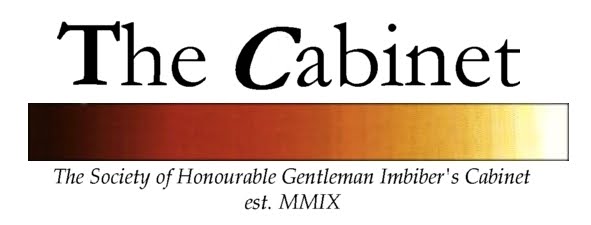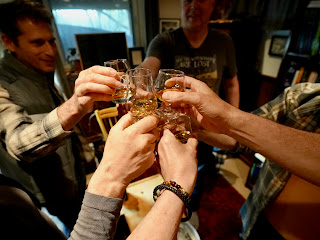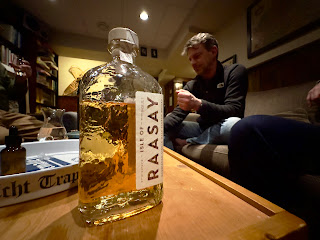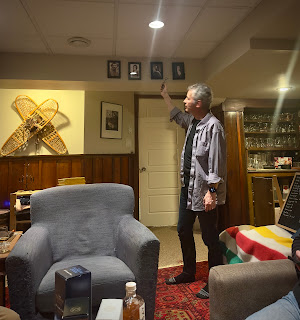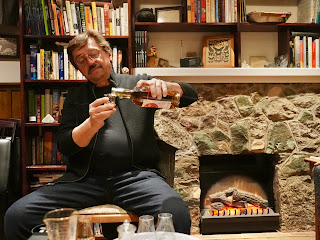The Cabinet has a deep and colourful history. It even has a pre-history, which you can read about if you use the handy search box on this blog and enter "history of the cabinet". You should get four hits. Three nights ago we assembled to mark another great moment in modern Cabinet history: when the founders met, and, more importantly, when they first drank scotch together.
Back, deep in the proverbial mists of time, I built a patio in front of our house. I am not a handy person by anyone's standards, so I had a lot of help. Al and Michael, who I had just met the previous fall, were among the helpers. Al had received a bottle of Macallan 25 year old as a Christmas bonus the previous year and in an act of astonishing generosity, suggested we open it to christen the new patio.
Macallan 25.
Let that sink in.
That is currently a ~$3000 bottle of whisky. It was a little less then, but it was still a spectacular extravagance.
And here's an additional surprise: I was a scotch virgin then. I might have had a Dewars or Johnny Black in an airport bar sometime. Maybe. But that's it. So my first single malt was a Macallan 25.
We proceeded to drink the entire bottle.
Michael had brought a Caol Ila, so we drank that too. All of it.
It was a beautiful September evening. I made salmon canapes. I recited all three verses of "The Owl and The Pussycat" from memory. I was lit. Then it became night. Then everything became wobbly and blurry. Then I hurled hundreds of dollars worth of partially digested scotch whisky all over our bedroom carpet.
Did that put me off drinking scotch? No siree! In fact, it led indirectly to the three of us starting to meet as "The Cabinet". Controlled measured limited drinking is the key to sustainable enjoyable unobjectionable drinking.
Al is no longer able to drink for unrelated health reasons, so he donated a Macallan gift box to The Cabinet. No, no 25 year old in there, but six little bottles of 10 and 12 year old. This became the basis of our 'Allan's Macallan' night. To which we added Caol Ila, of course. We also had an excellent guest, and as is our tradition, the guest chose the final pour from our stocks. He selected the Highland Park Magnus, which nicely bridged the gap between the smoothness and maltiness of the Macallans, and the iodine and smoke of the Caol Ila.
It was wonderful. All of it. And nobody vomited. Not even close. A lesson had been learned. It might have been a hard lesson, but it sure was fun learning it (up to the last minute).
